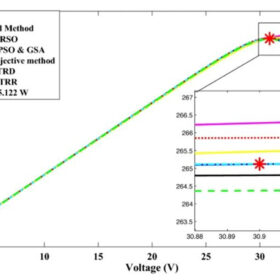How to combine photovoltaics with rainwater harvesting
Scientists have developed a system that harvests rainwater running off PV panels for household use or hydrogen production. Their analysis showed that, in the southern Sahel, the system can meet both the energy and water requirements for electrolysis, with surplus rainwater covering up to 50% of a household’s daily water demand.
Japan’s Toyo begins production at 2 GW solar cell plant in Ethiopia
Toyo Co. has started production at its 2 GW solar cell facility in Ethiopia, with plans to deliver more than 80 MW of tunnel oxide passivated contact (TOPCon) cells by the end of April before scaling capacity to 4 GW.
Japan’s Toyo plans 2 GW solar cell factory in Ethiopia
Tokyo-based Toyo Co. says it will invest $60 million in a new 2 GW solar cell factory in Ethiopia, to mostly serve the US market.
Optimizing bifacial solar panels for floating PV applications in tropical freshwater
New research from India shows how bifacial solar modules should be deployed to achieve strong performance in floating PV projects planned on tropical freshwater. Their experimental setup demonstrated that higher efficiency gains are achievable by gauging panel height, water depth, and tilt angle.
Desert-to-Power initiative seeking consultants for solar mapping
The Intergovernmental Authority on Development (IGAD) is seeking consultants to undertake a solar mapping exercise in seven of its members states: Djibouti, Ethiopia, Kenya, Somalia, Sudan, South Sudan, and Uganda. The deadline for expressions of interest is August 30.
Ethiopia inviting consultants for planned utility-scale PV project
State-owned utility EEP is looking for consultants to prepare a feasibility study that will encompass such key tasks as hydrology analyses, geotechnical and seismic investigations and assessments of meteorological conditions, solar resources and energy yield.
Researchers suggest using digested polymers for PV cell coatings, encapsulants
An international research team has proposed to use recyclable biomass-digested polymers as a material for PV coatings and encapsulants. The scientists developed a coating for PV cells that reportedly allows an increase in power output of up to 10%.
Study estimates global floating solar potential at 1,302 TWh
A UK-based research team has calculated the global potential of deploying floating solar arrays on almost 68,000 lakes and reservoirs. It found some countries could generate the majority of their electricity needs from floating solar panels, while five could meet all their electricity demand.
Optimization technique to extract unknown PV system parameters from manufacturers’ datasheets
Developed by an international research team, the proposed methodology can reportedly be used with all kinds of solar panels and under different environment conditions. It relies uniquely on the specifications of the modules’ datasheet, temperature and insolation intensity.
Ethiopia’s renewable energy sector hit by range of issues
Poor planning, overambitious projects and “weak” human and institutional expertise are just some problems plaguing the Ethiopian government’s best efforts to procure renewable energy projects, according to a new study.









